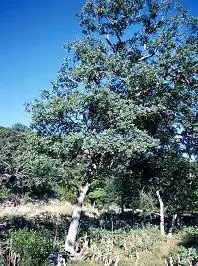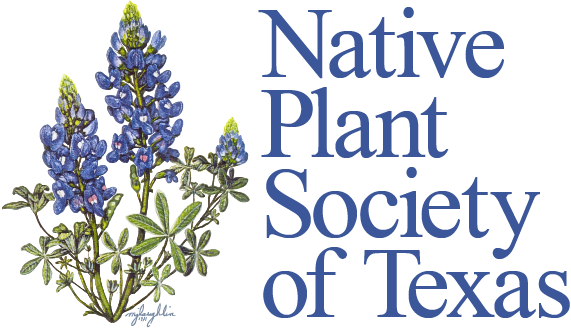NICE! Plant of the Month
Quercus glaucoides (Q. laceyi)

Family: Fagaceae
Other Common Names: Blue Oak
Type: Small- to medium-sized tree (20-30 feet)
Natural Habitat: Limestone escarpment in Edwards Plateau in Texas; also in northeastern Mexico.
Growth: Slow
Deer Resistance: No, young tree should be caged.
Wildlife: Annual acorns eaten by wildlife.
Light Tolerance: Part shade or full sun.
Flowers: Spring; male catkins 2 inches long; female catkins minute
Fruit: Brown acorns in clusters with flattened ends.
Leaves: Simple, alternate, late deciduous, leathery; dark blue-green; 2-5 inches long with round, wavy lobes.
Water Requirements: Low
Soil Requirements: Sand, loam, clay, caliche, limestone; well-drained.
Planting Instructions: Space trees 20-30 feet apart. Dig a hole at least two times wider than, but the same depth as the root ball in the nursery container. Sides of the hole should be irregular, not smooth. Remove plant from container, taking care to support the root ball. Loosen exterior roots gently with your fingers. If the plant is root-bound and cannot be loosened by hand, the outer roots may be cut in several places. Lift the plant by the root ball and place into the hole. Backfill hole, using soil that was dug out. Do not add any soil to the top of the root ball. Gently firm the soil with your hands, but do not tamp it down. Place 3-4 inches of mulch over the bare soil around, but not touching the base of the plant.
Watering Instructions: Water deeply after planting to settle soil around roots. Then every 7-10 days, as needed, during the first growing season. Before watering, check for soil moisture at a depth of an inch or two at the edge of the root ball. Skip a watering after a rainfall of ½ to 1 inch. Maintain this watering schedule until the first fall. Reduce watering during the cool fall and winter months. In a “normal” year, no watering may be necessary during the fall and winter, but during a dry period, monthly watering may be needed. Second Spring and thereafter: Water monthly only during periods of drought. Once established, natives will survive with little supplemental irrigation.
NICE! Tip: The tree’s beauty is its leaves, which come out a delicate peachy color in the spring, change to a soft blue-green in the summer, and usually returns to peach in the autumn. It is becoming a popular landscape tree because it is resistant to drought and oak wilt; and its smaller size makes it a good selection for urban yards.
Look for the NICE! Plant of the Month signs and information sheets on your next visit to a participating Boerne nursery. And thank you for supporting native plants by using them in your landscapes.
